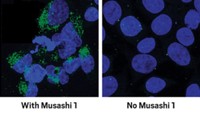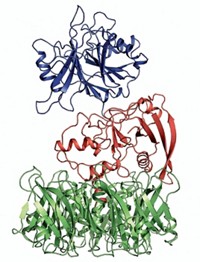Advertisement
Grab your lab coat. Let's get started
Welcome!
Welcome!
Create an account below to get 6 C&EN articles per month, receive newsletters and more - all free.
It seems this is your first time logging in online. Please enter the following information to continue.
As an ACS member you automatically get access to this site. All we need is few more details to create your reading experience.
Not you? Sign in with a different account.
Not you? Sign in with a different account.
ERROR 1
ERROR 1
ERROR 2
ERROR 2
ERROR 2
ERROR 2
ERROR 2
Password and Confirm password must match.
If you have an ACS member number, please enter it here so we can link this account to your membership. (optional)
ERROR 2
ACS values your privacy. By submitting your information, you are gaining access to C&EN and subscribing to our weekly newsletter. We use the information you provide to make your reading experience better, and we will never sell your data to third party members.
Biological Chemistry
Scientists solve Zika structure, identify possible fetal receptor
New discoveries about the virus could reveal weaknesses in its biology
by Sarah Everts
March 31, 2016
| A version of this story appeared in
Volume 94, Issue 14

Two separate research groups report discoveries about the notorious Zika virus currently spreading rapidly through the Americas. One announces the first glimpse at the virus’s structure, and the other identifies a possible receptor hijacked by Zika to gain entry into developing fetal brain cells.
In February, the World Health Organization declared the Zika epidemic “a public health emergency.” Spread by Aedes aegypti mosquitoes, Zika virus causes symptoms that are generally mild, and the illness can typically be overcome by bed rest. Global concern about the Zika epidemic stems from the virus’s suspected impact on developing fetuses. In Brazil, where over 1.5 million people have been infected with Zika since February last year, there has been an unusual spike in babies born with abnormally small brains, a condition called microcephaly.
Researchers have been racing to figure out if and how Zika might eke out so much damage to a developing fetal brain. They’ve shown the virus crosses the placenta barrier and they’ve reported cell death, necrosis, and severe microcephaly in the brain of a fetus exposed to the virus in utero.
Now a team led by Arnold R. Kriegstein at the University of California, San Francisco, has identified a candidate Zika receptor in developing human brain cells. The protein receptor, called AXL, was previously found to be a Zika target in skin cells. Kriegstein and colleagues report that the receptor is also expressed by cells in a developing brain and retina (Cell Stem Cell 2016, DOI: 10.1016/j.stem.2016.03.012).
The team cautions that AXL is not the only receptor scientists have linked with Zika infection. Understanding the mechanism by which Zika enters brain cells could help confirm and explain the virus’s destructive impact and perhaps inspire strategies to avoid the devastating outcomes.
Meanwhile, a group of researchers at Purdue University led by Michael G. Rossmann and Richard J. Kuhn used cryo-electron microscopy to obtain a 3.8 Å structure of the Zika virus (Science 2016, DOI: 10.1126.science.aaf5316). The new structure provides a molecular basis to study how the virus gains entry to human cells and how antibodies recognize the pathogen, comments Priscilla Yang, who studies viruses at Harvard Medical School and was not involved in the research.
Zika’s globelike icosahedral shell is reminiscent of other known flaviviruses, including those that cause yellow fever, dengue fever, and West Nile disease. What distinguishes the Zika structure from the other flaviviruses, Rossmann says, is a short sequence of 10 amino acids found in each of the 180 glycoproteins that form the exterior shell. In particular, this amino acid stretch harbors an asparagine that acts as a glycosylation site. The sugar attached to this asparagine—whose identity must still be determined—likely binds a receptor on human cells and thus mediates infection, Rossmann says.




Join the conversation
Contact the reporter
Submit a Letter to the Editor for publication
Engage with us on Twitter